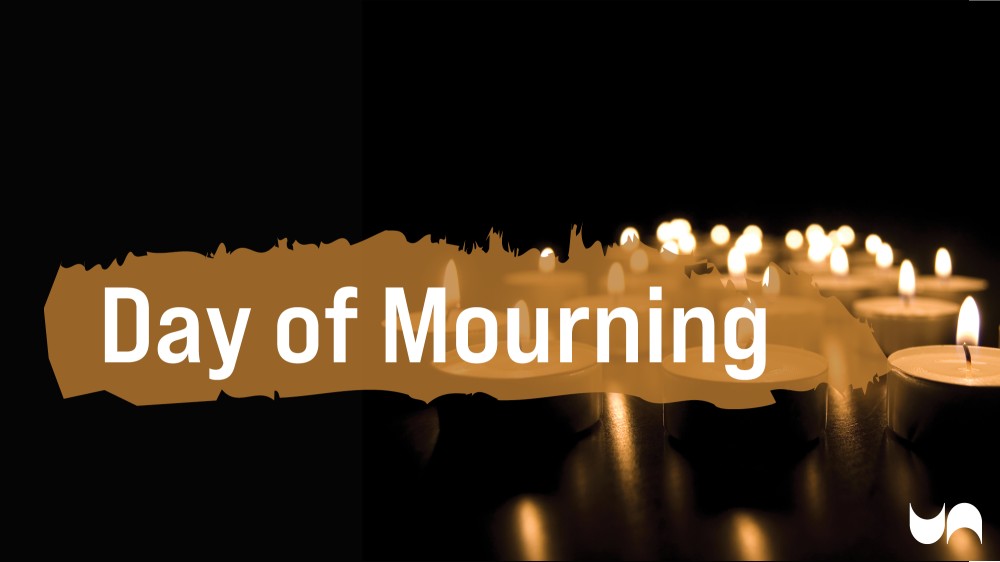On April 28, the Day of Mourning, Stay Safe at Work!
Column by Dewey Funk, UNA OHS Advisor
“Mourn for the Dead, Fight for the Living” was the call of Mary “Mother” Jones, the Irish-American labour organizer who lived from the early 1830s to 1930. “I belong to a class who have been robbed, exploited and plundered down through many long centuries,” Mother Jones famously said. “Because I belong to that class, I have an instinct to go and break the chains.”
Mother Jones’s call is still being shouted out by workers. And that includes health care workers in Alberta, who are asking for change in the workplace.
Health care workers recognize that the controls employers are obligated to have in place to prevent deadly weapons being brought into our workplaces, illicit substances being used there, and verbal and physical abuse are clearly not working.
Likewise, Alberta nurses and other health care workers must regularly use broken equipment and listen to employers say it can’t be fixed because of budgetary concerns.
If a nurse injures her back as a result, though, her WCB claim costs money too.
This wouldn’t be as likely in a male-dominated workplace like a construction site, and we know why.
Consider these shocking 2023 statistics from Alberta:
- WCB Alberta accepted nearly 50,000 claims
- 10 per cent of them came from workers in health care services
- The government, education and health services sector continued to have the highest claim rate
- The leading occupation group for claims was nurse aides, orderlies and patient service associates (7 per cent)
- The claim rate for exposure to harmful substances was nearly four times as likely a among core female workers (aged 25 to 64 years) than among core male workers
- The claim rate for assault, violence or harassment was double for core female workers what it was for core male workers
These are startling numbers. It’s not acceptable that assault, violence and harassment rates for women should be double that of men. Yet instead of resolving to fix an obvious problem, the first question asked employers and HR staff is often, “How did you approach the culprit?”
Behavioral Safety Program
Covenant Health has put in place the Behavioral Safety Program (BSP) at all sites. AHS is in the process of training all sites in the BSP.
This is a great system that needs to be made a mandatory part of the patient assessment process now. If made mandatory, it would prevent many injuries.
Yet employers have not made this program mandatory.
In 2014, an Alberta nurse was sexually assaulted while at work. UNA represented this member and as part of the resolution the Prevention of Violence Workgroup was formed and developed the purple dot program, which requires alerts to be placed on patients’ charts or rooms in the event there are behaviour issues staff need to be aware of to work safely in the area.
This was put in place because UNA argued that workers have a right to know when they face a risk of violence, as indicated by Part 27 of the Occupational Health and Safety Code.
UNA also continues to advocate for presumptive legislation for psychological injury for nurses.
UNA’s advocacy for presumptive legislation for psychological injury for nurses has paid off.
For years, Alberta’s government did not include nurses as first responders. From a common-sense perspective, this made no sense. After all, when a patient comes through the door of an emergency department, who looks after them? A nurse! When a patient’s condition worsens, or the patient passes away, who is with them? A nurse.
Yet for years first responder legislation was applicable only in male dominated occupations. The agreement ratified on April 2 includes a process that will see this situation quickly ratified, once and for all.
On April 28 this year – Day of Mourning for workers killed or injured on the job – take the time to work safely and report all assaults and broken equipment. Don’t do lifts that could injure you.
Your partner, your kids, your circle of friends and family will appreciate that you are safe, and able to get on with a healthy life.
On behalf of UNA’s OHS Advisers, we wish you a safe and healthy 2025.

